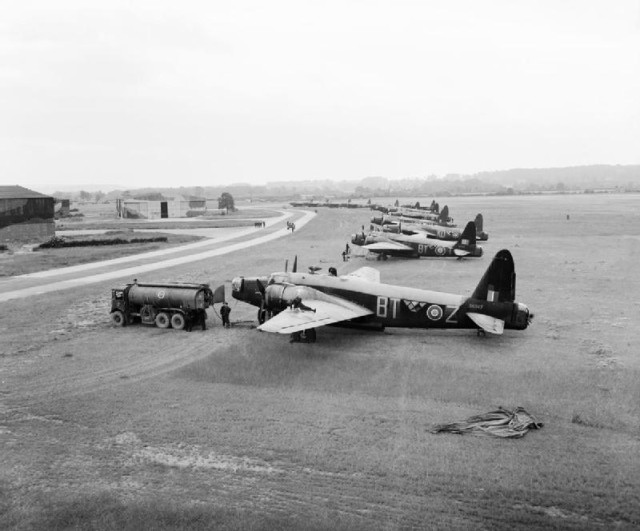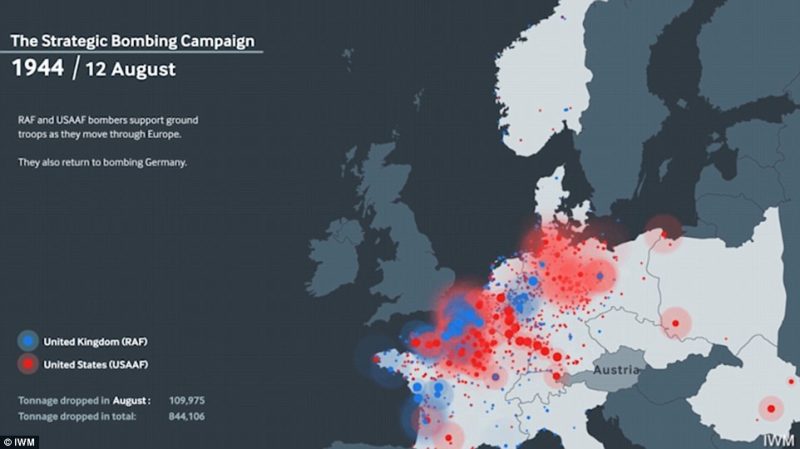The Imperial War Museum in England has created an animation that illustrates the Allied bombing campaign that helped to win World War II. The map shows the locations of all the bombing raids by either the Royal Air Force or the United States Army Air Forces from the start of the war in 1939 until its end in 1945.
It illustrates the 1.6 million metric tons of explosives that were dropped on territory controlled by the Nazis and their allies. It also shows the importance of the cooperation between Britain and the U.S.
Researchers created the animation project to mark the re-opening of the American Air Museum, which is in Duxford, Cambridgeshire. The U.S. joined the war in December 1941. From that point on, the RAF worked in conjunction with the USAAF.
The full extent of the Allies’ bombing campaign has never been provided in this format before. The graphic displays British raids in blue and American raids in red and shows how the Americans shared the burden with Britain, who had previously had faced Germany alone.
The video shows the increase in raids from only a few in the beginning to over 100,000 metrics tons dropped in a day at the peak of the war. Over 80% of the raids occurred in the last year and a half of the war during the Allies’ advance to recapture France and move into Berlin. In June 1944, a barrage of raids can be seen marking D-Day when the combined forces provided support for ground troops landing in Normandy. The efforts effectively turned the momentum of the war in the Allies’ favor.
While the bombing raids are considered an important factor in the Allied victory, they are controversial because of the high number of civilian deaths that they caused. British commander “Bomber” Harris was particularly known for preferring to bomb general areas rather than pinpointing targets.
Emily Charles headed up the team that created the animation. History books often leave out details, so she needed to look at the official records of each run to research every wartime raid.
Noting the effectiveness of the raids, she said, “You look at the map and there’s not much that’s not covered in color.”

The raids can be seen beginning in France, moving east into the Netherlands and Germany, and then pausing just before D-Day as the Allies prepared for the important offensive thrust. The raids return stronger than ever on D-Day and spread into the heart of Germany.
The museum will feature an interactive version of the video. Other animations about the war will be available as well.
The American Air Museum tells about the cooperation between the RAF and the USAAF from 1918 until the present. Its displays include aircraft from the Gulf War and the recent conflicts in the Middle East along with aircraft from World War II.
Approximately 30,000 U.S. airmen were killed in Europe while fighting against the Axis forces.
Diane Lees, director-general of the museum, said, “The transformed American Air Museum will tell the story of the relationship between Britain and America in very human terms. Personal stories come to the fore, vividly demonstrating the consequences of war in the 20th and 21st centuries.”
Image by Royal Air Force official photographer,., Public Domain, https://commons.wikimedia.org/w/index.php?curid=30928414
